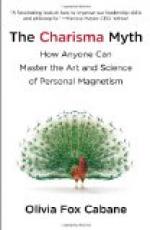Besides, as we have before remarked, the empirical knowledge of things begins and is perfected in the superstitions of fetishes and myths. Ideas are modified and become purer as they converge into types, and the principle and method at once become more rational. Either in the faculty of perception and in its elements, or in the inward classification of specific forms, or again in the more perfect empirical knowledge of phenomena, the progress of myth and science go on together, and they are not only developed in a parallel direction, but the form becomes the covering, involucre, matrix, or, as I might say, the cotyledons, by means of which the latter is developed and nourished. Even in more rational science this faculty, and these elements, necessarily recur, since in every human conception we find the material aspect, or its mental image, the thing and its cause, and, as we shall see, some mythical personality is insensibly identified with it.
The act which produces myth is therefore the same from which science proceeds, so that their original source is identical. The same process which constitutes the fetish and myth also constitutes science in its conditions and form, and here we find the unique fact which generates them both; science, like myth, would be impossible without apprehension, without the individuation of ideas, and the classification and specification of types.
Before going further I must briefly recapitulate the order of ideas and facts which we have observed, so that the process may be as strictly logical as it is practical. Since, in the elements of apprehension, perception is absolutely identical in man and animals, its primitive effects in animating natural phenomena are the same. But man, by means of his reduplicative faculty, retains a mental image of the personified subject which is only transitory in the case of animals, and it thus becomes an inward fetish, by the same law, and consisting of the same elements as that which is only extrinsic. These phantasms are, moreover, personified by the classifying process of types, they are transformed into human images, and arranged in a hierarchy, and to this the various religions and mythologies of the world owe their origin. Since such a process is also the condition and form of knowledge, the source of myth and science is fundamentally the same, for they are generated by the same psychical fact. It is in this way that the progress of human intelligence was developed in the course of ages; its attitude varies in various races, but the impulses, the faculty, and its elements are identical. I do not think that this unique fact in which myth and science have their source has been observed before; still less has any one defined the limits of human intelligence, and recognized in the simple acts of animals the formal and absolute conditions of human science, and the origin of myth.




